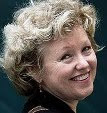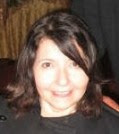Saturday, December 31, 2011
“We Live Therefore We Write.” Really?
Monday, December 26, 2011
Permission to Dream, a Day to Creatively Re-energize

By Caitlin Rother
Today is a federal holiday, a day that if I were still at the newspaper, I’d probably spend cleaning my desk, writing emails to people who weren’t at work and could read upon their return, chatting with colleagues about their holiday, and playing around with Google to brainstorm new story ideas. A day, in other words, to catch up and yet be ready if anything big should break. Holiday staffs were small even in those days, so I might have been called in to help the cops reporter cover a murder, but chances were that I would end up with a nice relaxing day and still earn a paycheck.
But now that I’m out of the breaking news biz and I’m my own boss, it is now up to me to spend this day working (or not), without any promise of pay. As such, I have decided to use my Boxing Day “holiday” to come up with some concrete goals, but also to give myself a chance to dream, trying not to limit myself by saying, “No, that will never happen.” As I’m writing this, I feel in my gut that I didn’t go far enough in my journal this morning. I feel the need to go back in and dream even bigger.
For the inspiration to carry out this endeavor, which I do at least annually but always around this time, I want to thank my good friend Samuel Autman, who some years back sent me the book, “Write it Down, Make it Happen,” by Henriette Anne Klauser. Even if you don’t read the book, I encourage you to try this exercise. It’s fun and it works for me. Two hours ago I felt like I had an insurmountable stretch of endless tasks ahead of me, and I now feel a hope, an optimism, and a renewed sense of creative energy that will last me throughout the day and into this week if not longer. Last year or the year before, I can’t remember, I put down, “I want to make the New York Times bestseller list” and this year it happened.
Here’s how I do it: I start with a cappuccino and a list of small, do-able goals for the very near future. From there, I move on to the bigger goals, and then I hatch some dreams, both foreseeable and off the charts. I start each sentence with language such as “I would like…” or “I want” or “It would be nice if” or “I’d love to have the opportunity to.”
What I didn’t do today, but have done previously, is to actually visualize one of those dreams or goals into a scene with characters and dialogue and watch it come true as it happens in present tense and in real time (thank you Ms. Klauser for that one). I not only do this in my journal, but I also have used it in my creative writing classes. My students said they really enjoyed it, even writing to me months later with news of something that happened that they wouldn’t have noticed or appreciated if they hadn’t done this exercise.
Today, I gave myself the permission to dream and to feel the joy that makes this writing life so full. I still have those many tasks ahead of me, but I have given myself permission to save the harder, more challenging work for later in the week, knowing that I will feel more willing and able to tackle the world and handle the challenges life throws at me.
Onward!
Caitlin Rother, a Pulitzer-nominee who worked as a investigativer reporter for nearly 20 years, is the author or co-author of seven books: Poisoned Love, Deadly Devotion/Where Hope Begins, My Life, Deleted, Body Parts, Twisted Triangle, Naked Addiction, and her latest book, Dead Reckoning. Coming next is Lost Girls, about the murder of innocents Chelsea King and Amber Dubois by sexual predator John Gardner. For more information, please check out her website, http://caitlinrother.com.
Monday, December 19, 2011
The Gift of Story: Priceless

The greatest gift I’ve received in a long, long time is a story my older sister, Ginger Barnard, wrote about me when I was a 4-year-old wild child. She rediscovered it last month while we were cleaning out nearly 50 years of memories from the house of our 93-year-old mother, who recently moved into an assisted living home.
Ginger was so excited when she found her story that she called me to read it over the phone and then retyped it to send to my siblings and me by email with the following note:
“The attachment is my retyping of a story I wrote for Honors English in December 1959. It was in a notebook of work from my class that I found at Mom’s house last weekend. I was going to chuck it until I started reading the essays and stories that I had written. Some pretty interesting stuff. This piece made me laugh out loud. It is/was all true.”
Her story made me laugh, too, and whisked me back to my childhood, when life was as simple as making mudcakes and riding tricycles. I am sharing her “Just Like Daddy” in hopes that it will inspire you to keep track of your own precious memories. They will be an extraordinary gift of love for your family and friends many years from now. And by the way, my sister is right—everything she wrote about me is true!
Just Like Daddy
This has been retyped from a paper written on December 4, 1959, by Virginia Irvine, aged 16, for Honors English at Crawford High School, San Diego, California. An “A” grade was earned. This version includes the corrections made by Miss Florence Eaton, Honors English teacher. Ginger Irvine Barnard (aka Virginia), November 7, 2011.
It was a peaceful Saturday morning on a San Diego, California, street. The warmth of the sun was removing the last dew from the grass. There was no activity on this particular street until one front door opened at approximately 8:00. A relatively clean-faced, Dutch-bobbed four-year-old appeared on the threshold. Every Saturday morning this same front door opened at the same time and the same child emerged.
At first glance a passing stranger might question the sex of the child because other than the haircut there was no distinguishing identification. The child was dressed in a Grand Canyon T-shirt, boys’ blue jeans, ragged navy blue tennis shoes, and one red sock and one white sock. To further add to the confusion of “its” gender, a voice from inside shrieked, “Georgie, come and eat your eggs!” To this the child replied rather belligerently, “Don’t like dirty, dumb eggs.” The second shout from the house confirmed Georgie’s identity. “Georgeanne, if you don’t come and eat your eggs—NO CARTOONS today!”
With this threat hanging over her head, Georgeanne “Bratenella” Irvine skipped down the front steps singing “Popeye the Sailor Man.” “Bratenella” was a name added by her two older sisters, who consider her quite a nuisance.
Georgeanne walked into the garage and picked up her wheelbarrow and shovel that were “just like Daddy’s” and marched out of the garage “just like Daddy.” The neighbors call her “Big George’s sidekick.” Often Georgeanne can be heard cackling over the fact that even her name was “just like Daddy’s.”
With a passion Georgeanne hates dresses, dolls, and ruffles. Like everything else she doesn’t like, dresses, dolls, and ruffles are “dumb and dirty.” When her mother suggested hanging pictures of ballet dancers in Georgeanne’s purposefully feminine bedroom, Georgeanne had a fit and insisted that horses and dinosaurs would be much better.
Animals are her big love. She sleeps with seven of them. Horsie is the leader of the gang and takes the blame for any or all of Georgie’s numerous misdeeds. There are three “rabbies” of assorted sizes and colors, a large green dinosaur, a penguin, and finally Elli Phant. Another old standby is Pinky-by, a ragged remnant of a blanket, left over from babyhood. Pinky and all of the animals are gifted with the power of speech, which only Georgie can hear.
For a four-year-old, Georgeanne has a long attention span. She will work an entire day helping her father put in the new lawn. Coloring books and TV occupy hours of her playtime. Cartoons and cowboys are TV favorites. She has the commercials of all the cartoon shows memorized. Captain “Roo,” Annie “Oakless,” and Huckleberry Hound are her “berry favert shows.”
The threat of no cartoons was in the back of her mind at approximately 8:05 that same Saturday morning because she had just broken all her previous records for getting dirty. Five changes of clothes in one day are not unusual for Georgeanne.
By 8:10 a.m. the neighbors on that once quiet street were no longer sleeping. Georgeanne had dropped her shovel in her wheelbarrow twice, hit the car once, fallen flat on her face, and demonstrated her famous foghorn cry.
The rest of the day was smooth sailing, if you do not take in consideration the usual spilled milk, slammed doors, and spankings. At bedtime the ruckus began all over again. The first faux pas she made was to steal one of her big sister’s high heels and a stocking and hide them in a closet. Immediately the big sister began running down the hall after the culprit and shouting at the top of her voice, “Stop! Give me my shoe. I’m going to be late. You little brat, where did you put my shoe?” and finally, “MOTHER, will you do something with this little monster! It’s way past her bedtime.”
The fatal mistake had been made. Her presence had been noticed and the time had been noticed. Before going to bed she always takes a bath. Bath time means fun time for Georgeanne because sometimes she is forgotten and then she can flood the bathroom.
After a long struggle the little monster is put to bed with all her animals. Her mother tried to explain to her about saying her prayers. After a careful explanation that God was her Heavenly Father and watched over and took care of her all the time, Georgeanne popped up with the sixty-four-dollar question. “Then why do I have to have baby-sitters?”
With that closing remark, Georgeanne “Bratenella” Irvine drifted into nitey-nite land. Tomorrow was Sunday and that meant the funny papers came in the morning and that meant she’d have to get up at six to get the paper first. Of course she can’t read but the funnies are a good excuse to get up early. After all, you’re only young once.
San Diego native Georgeanne Irvine has devoted more than three decades of her career to raising awareness about animals and wildlife conservation. By day, she is associate director of development communications for the San Diego Zoo, where she has worked for 33 years. George is also the author of more than 20 children’s books, plus numerous magazine, newspaper, and Web articles. George’s most recent work is the coffee table book, The Katrina Dolphins: One-Way Ticket to Paradise, which is a true story about 8 dolphins from an oceanarium that were washed out to sea during Hurricane Katrina in 2005 and dramatically rescued a few weeks later.
Friday, December 9, 2011
Things That Go "Bump" in the Day
 One time when I was growing up, my sister and I, newly old enough to stay home alone for a few hours, were “terrorized” after dark by a neighbor on the front porch dropping off something he had borrowed from my dad. We stayed huddled in the bathroom for what seemed like an eternity until our parents got home, arming ourselves only with a flashlight we planned by some childish logic to defend ourselves with if the intruder broke down the door.
One time when I was growing up, my sister and I, newly old enough to stay home alone for a few hours, were “terrorized” after dark by a neighbor on the front porch dropping off something he had borrowed from my dad. We stayed huddled in the bathroom for what seemed like an eternity until our parents got home, arming ourselves only with a flashlight we planned by some childish logic to defend ourselves with if the intruder broke down the door.Thursday, December 1, 2011
Poisoned Love, Updated


By Caitlin Rother
Paramedics found the body of Greg de Villers on the bedroom floor, surrounded by red rose petals, with a wedding photo of him and his wife, Kristin Rossum, propped up near his head. Rossum, a beautiful blonde and a talented toxicologist, told police her adoring husband was so depressed she was leaving him that he’d overdosed on some old pills she’d once used to come down after smoking crystal meth.
But authorities concluded that Rossum was to blame after they discovered those same drugs – as well as the powerful painkiller, fentanyl -- were missing from her lab at the San Diego County Medical Examiner’s Office. Rossum, they said, was scared her husband would expose her meth addiction and her affair with her married boss, so she used the tools of her trade to poison de Villers with a lethal cocktail of narcotics. The case was dubbed the “American Beauty murder” after the red rose by that name and, of course, Rossum’s favorite movie, “American Beauty.”
Years after Rossum was sentenced to life in prison without parole, she got a new appellate defense attorney, who, in turn, found a medical expert to cast doubt not only on the cause of death in this case, but to raise fascinating forensic questions about the role of fentanyl and her conviction as well. The recent traction her appeal got from the Ninth Circuit Court of Appeals gave me the impetus to add twenty pages about these and other new developments to my book on the case, POISONED LOVE. The updated and revised edition officially goes on sale nationwide on Tuesday, December 6.
The new expert, Dr. Steven Richeimer, claimed that Rossum’s trial attorneys did not put on a good case back in 2002, and that the defense’s argument that de Villers ingested the fentanyl to commit suicide made no sense in light of the inherently conflicting medical evidence: de Villers’s body contained enormous amounts of fentanyl – a fast-acting narcotic that is 100 times stronger than morphine – and yet he took six to twelve hours to die. More importantly, the doctor contended, the prosecution’s argument that the drug was given to de Villers through multiple administrations over a period of time didn’t make sense either.
Richeimer’s new theory: contamination of the autopsy samples, accidentally or on purpose. In 2010, the Ninth Circuit Court of Appeals granted the defense’s request to retest those samples for fentanyl metabolites, to see if the drug got into de Villers’s system before or after death.
The appeal is still pending before the Ninth Circuit. Although the Attorney General’s Office won the latest round to stop Rossum from retesting those autopsy samples, Rossum and her attorney haven’t given up yet. Perhaps they have taken a cue from the case of Cynthia Sommer, who was ultimately acquitted after her husband’s autopsy specimens were retested and found to contain no arsenic after all.
Kristin Rossum had everything going for her: Beauty, brains, and the start of a brilliant career in toxicology. But in November 2000, Rossum, the daughter of two accomplished academics from Claremont, Calif., was torn between three relationships: one with her husband, one with her boss, and one with crystal meth, a very close old friend with whom she’d become recently reacquainted.
The 24-year-old toxicologist had kicked meth a few years earlier with the help of her husband, the son of a French plastic surgeon. After reluctantly agreeing to wed de Villers, she was already regretting her decision six months later. He was clingy. She felt suffocated. He wanted to start a family; she wanted to pursue her career.
Then Rossum found a way out. She fell in love with Michael Robertson, her hunky Australian boss, who was also in an unfulfilling marriage. The lovers snuck away for sex at lunch and wrote each other sappy cards and e-mails, fantasizing about having children and spending the rest of their lives together. “You are my destiny,” they told each other.
Torn over what to do, Rossum started using meth again. She told de Villers she was going to move out. They argued, and he threatened to report her affair and drug use to her superiors.
On the night of November 6, 2000, she called 911 to report finding her husband in bed – cold, pale and not breathing. The dispatcher told her to pull him onto the floor and start CPR. Rossum later police that when she pulled back the covers, she saw red rose petals all over his chest and their wedding photo tucked under his pillow. Despondent she was leaving him, he must have committed suicide, she said.
The police initially believed her story until the incriminating evidence began to mount. First, they learned of her affair. Then, after toxicology tests were done by an outside lab, which found that de Villers had several drugs in his system, the cause of death was ruled as acute fentanyl intoxication.
Rossum was charged with murder after fentanyl, meth and other drugs found in de Villers’ body were discovered missing from her lab. Prosecutors described Robertson as her “unindicted co-conspirator,” and despite a police investigation into his involvement, he still has not been charged. A jury found Rossum guilty of murder, with the special circumstances of using poison, in November 2002, and she was sent to prison for the rest of her life.
POISONED LOVE explores the psychological aspects of this complex case, revealing details about the investigation and major players that had never been disclosed to the public. The book also includes excerpts of e-mails, diary entries, letters and other court evidence that lend insights into Rossum’s character, illustrating how an obsession for passion, a fatal attraction to crystal meth, and easy access to dangerous narcotics can lead to murder. This cautionary tale shows how a powerful drug addiction, coupled with such a crime, can destroy not just one life but many others in the process.
I hope you can join me at one of the talks and signings I’ll be doing about this book and my first thriller, NAKED ADDICTION, which is also set in La Jolla. I’ll be at Barnes & Noble in Oceanside (Dec. 13), Warwick’s in La Jolla (Dec. 18), Bookstar across from UTC (Jan. 6), Bay Books in Coronado (Jan. 13), and the La Jolla Riford public library (Feb. 1). Please visit my website for updates and more details: http://caitlinrother.com/events.html.
Caitlin Rother, a Pulitzer-nominee who worked as a investigativer reporter for nearly 20 years, is the author or co-author of seven books: Poisoned Love, Deadly Devotion/Where Hope Begins, My Life, Deleted, Body Parts, Twisted Triangle, Naked Addiction, and her latest book, Dead Reckoning. Coming next is Lost Girls, about the murder of innocents Chelsea King and Amber Dubois by sexual predator John Gardner. For more information, please check out her website, http://caitlinrother.com.












